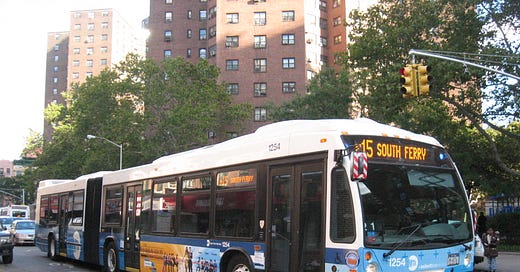Bipartisan Infrastructure Framework Will Address Barriers Communities of Color Face, WH Says
From broadband Internet, to drinking water systems, infrastructure compromise will boost underserved communities, administration promises
Perhaps lost in the political finger-pointing over the scaled-back infrastructure initiative agreed to between President Biden and Senate Republicans, is what the $1.2 trillion package will actually do once it becomes law.
And the White House Wednesday released a new fact sheet which describes a number of differences that the infrastructure legislation will make for a number of underserved communities of color.

These include:
Broadband Internet: Black families are 9 percent less likely to have high-speed Internet than their white peers, and Latino Americans are 15 percent less likely. About 35 percent of individuals living on Tribal lands lack access to broadband service, according to the White House.
“For example, broadband access and affordability in the Pacific Islands has long been a challenge. During the COVID-19 pandemic, there were stories of kids sitting in McDonald’s parking lots to log on to remote school in parts of the country. The President believes this is unacceptable,” the fact sheet said. “The [bipartisan] Framework invests $65 billion to make high-speed broadband available to all Americans, to bring down high-speed internet prices across the board, and to close the digital divide. [The] plan will also invest in long overdue expansion of broadband on Tribal lands, in consultation with Tribal Nations.”
Lead Pipes And Drinking Water: There are up to 10 million homes with lead service lines and pipes. Children in up to 400,000 schools and child care facilities are at risk of exposure to lead, according to White House estimates. Across the country, families of color are at the highest risk for lead exposure at home and in schools. Communities of color in cities like Chicago, Milwaukee, and Newark are also at particular risk, the White House added. For kids, higher exposure to lead can negatively affect academic performance, and can lead to cardiovascular disease later in life. By some estimates, each lead service line replaced at a cost of $5,000 per line leads to $22,000 in health savings, according to the fact sheet.
“The Framework makes the largest investment in clean drinking water in American history, replacing all of the nation’s lead pipes and service lines. From rural towns to struggling cities, the Framework invests in water infrastructure across America, including in Tribal Nations and disadvantaged communities that need it most,” the fact sheet said.
Public Transit: Asian American and African American workers commute by public transit at nearly four times the rate of white workers. For example, low-wage Black residents in Chicago spend 70 additional minutes commuting to work than their white peers. In New York City, the average Black resident spends 110 minutes more per week commuting to work than the average white resident, the White House said.
“The Framework’s historic investment in public transit – the largest federal investment in history – will reduce commute times and create more economic opportunities in communities of color,” the fact sheet said. “The Bipartisan Infrastructure Framework invests $48.5 billion to modernize transit, and improve accessibility for older Americans and people with disabilities. It will clear the backlog in public transit repairs, and build new transit. It will replace thousands of transit vehicles, including buses, with clean, zero emission vehicles.
“These investments will yield significant returns for communities of color. Investments in public transit help people get better jobs and higher wages, and raise economic growth and productivity,” the fact sheet added. “One study found that a metropolitan area’s 10 percent increase in transit seats or rail service miles per capita is associated with up to $1.8 billion per year in increased wages. Another study found that improved transit access increases labor force participation.”
Reconnecting Communities: Significant portions of the Interstate highway system were built through Black neighborhoods, destroying homes, schools, churches, and parks and causing lasting disconnection and disinvestment for residents who stayed, the White House noted. More broadly, historic investments in transportation infrastructure, especially highway construction, cut too many Americans off from opportunity, dividing and demolishing communities, and perpetuating economic and racial injustices, the fact sheet said.
"The Framework creates a first-ever program to reconnect communities divided by transportation infrastructure,” the fact sheet said. “The program will fund planning, design, demolition, and reconstruction of street grids, parks, or other infrastructure. This is in addition to other major grant programs that could fund elements of these projects.”



